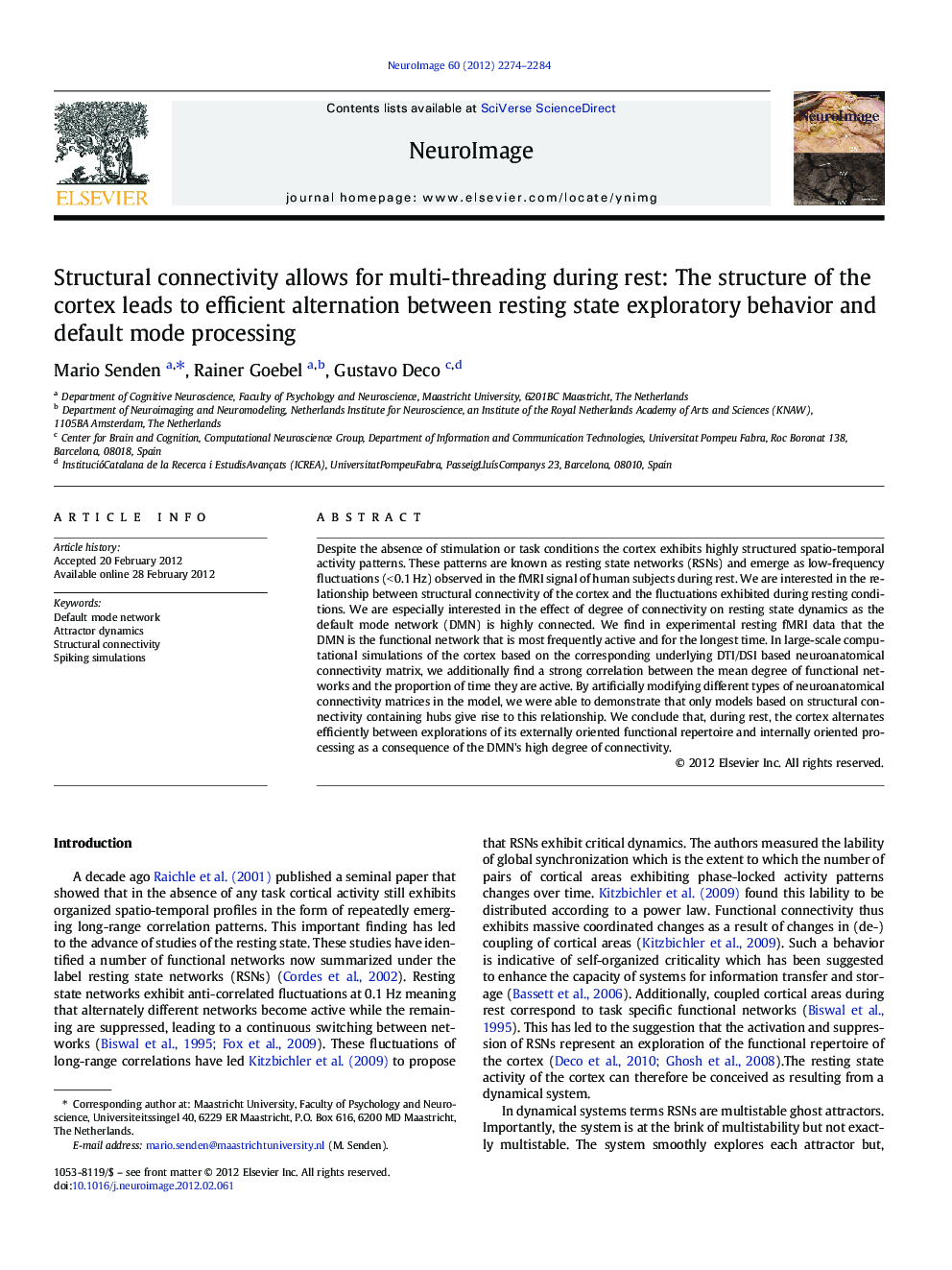| کد مقاله | کد نشریه | سال انتشار | مقاله انگلیسی | نسخه تمام متن |
|---|---|---|---|---|
| 3072069 | 1580941 | 2012 | 11 صفحه PDF | دانلود رایگان |

Despite the absence of stimulation or task conditions the cortex exhibits highly structured spatio-temporal activity patterns. These patterns are known as resting state networks (RSNs) and emerge as low-frequency fluctuations (< 0.1 Hz) observed in the fMRI signal of human subjects during rest. We are interested in the relationship between structural connectivity of the cortex and the fluctuations exhibited during resting conditions. We are especially interested in the effect of degree of connectivity on resting state dynamics as the default mode network (DMN) is highly connected. We find in experimental resting fMRI data that the DMN is the functional network that is most frequently active and for the longest time. In large-scale computational simulations of the cortex based on the corresponding underlying DTI/DSI based neuroanatomical connectivity matrix, we additionally find a strong correlation between the mean degree of functional networks and the proportion of time they are active. By artificially modifying different types of neuroanatomical connectivity matrices in the model, we were able to demonstrate that only models based on structural connectivity containing hubs give rise to this relationship. We conclude that, during rest, the cortex alternates efficiently between explorations of its externally oriented functional repertoire and internally oriented processing as a consequence of the DMN's high degree of connectivity.
► We simulate resting state fMRI activity using an attractor model.
► We vary the structural connectivity of our models to examine the effect on dynamics.
► The constituent areas of the Default Mode Network form a structural core.
► A structural core is visited preferably during rest.
► We observe this in our simulations and empirical data.
► The cortex alternates between exploration behavior and default mode processing.
Journal: NeuroImage - Volume 60, Issue 4, 1 May 2012, Pages 2274–2284